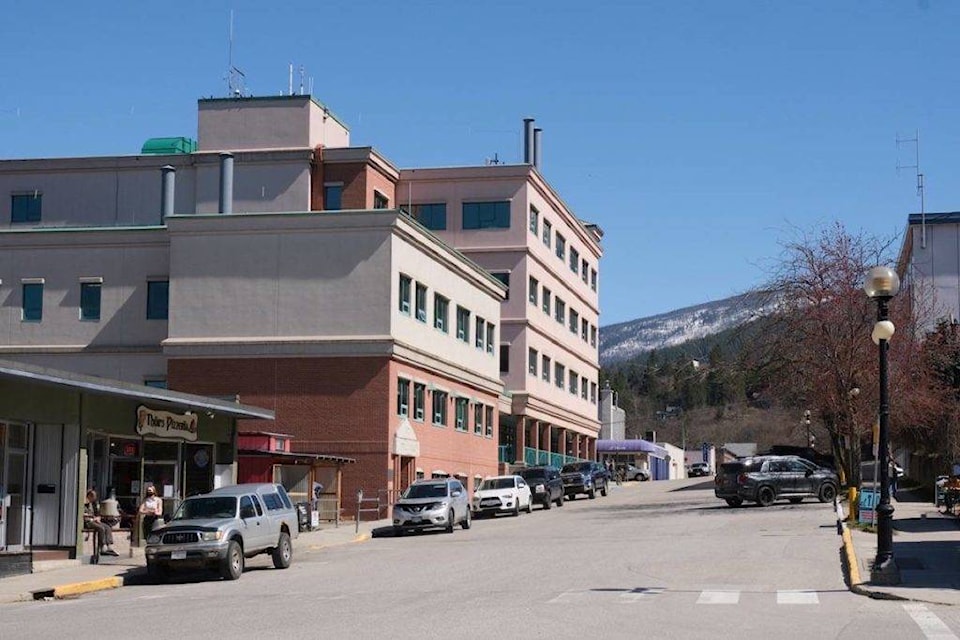During recent public discussions about City of Nelson’s proposed transit hub on the 300 block of Victoria Street, many residents and businesses in or near that block questioned the location.
They wanted to know why the city had not chosen, for example, the 400 block of Victoria or the 700 block of Baker Street for the new transit hub.
But the city and B.C. Transit, the agency that partners with municipalities to provide transit, both stated that after much analysis of various locations they had decided the 300 block of Victoria was the best one.
However, they never explained in detail why other specific blocks were rejected.
The Nelson Star recently asked B.C. Transit to provide details on why Railtown, the 700 block of Baker Street, the 600 and 700 blocks of Vernon Street, and the 400 block of Victoria were not suitable as locations for the transit exchange.
B.C. Transit referred the question to the City of Nelson.
“The decision on land use is essentially up to our local government partners,” B.C. Transit’s Jamie Weiss said in an email.
However, Weiss went on to say that “when BC Transit investigates sites for future transit exchanges, the agency considers many factors. This includes costs, travel patterns, environmental impacts, transit circulation, adjacent land uses, pedestrian safety and walkability and if additional land purchase is required.”
But the agency was unwilling to comment on the advantages and disadvantages of the above-listed alternate Nelson locations.
At the Nelson Star’s request, Colin McClure, chief financial officer for the city, provided the following information on the pros and cons of several alternative locations that were considered for the transit exchange.
The city’s criteria included whether there was room for a bus shelter, an indoor drivers’ rest area (“driver amenity”) and a public washroom.
Also considered were the number of driveways that would be blocked, how many buses could be parked there at once, proximity to downtown, the slope of the street, bus routing (whether a bus could easily access and leave the block), the width of the street, and the number of business or residential frontages that might be inconvenienced.
The impact on parking was another issue. When the bus stop moves from Ward Street, that will free up parking spots, the number dependent on whether parallel or angle parking replaces the bus stops, and that decision has not been made yet.
McClure provided no numbers for lost parking in any of the locations listed below.
Here are the locations suggested by critics of the 300 block of Victoria location, with the pros and cons as given by McClure.
700 block Baker (adjacent to the Kootenay Co-op parking lot)
Pros
• Downtown location
• Public washroom nearby
• Space to accommodate up to five buses
Cons
• Driveways to car dealer parking lots and mechanics would be blocked
• Limited available space for driver amenity
• Challenging for buses to enter or leave through limited space in the Baker-Hall intersection
• Limited space for bus shelter
700 block Vernon (east from Hall Street)
Pros
• Limited effect on retail business frontages (Civic Theatre and the sports activities do not need retail business frontage)
• Room for driver amenity and washroom
• Space to accommodate up to five buses on one side of road
• Close to downtown
Cons
• Challenging for buses to enter or leave via Cedar Street intersection, or via Hendryx Street because of the Vernon St. boulevard
• Located slightly outside downtown core
• Limited space for bus shelter
600 block Vernon Street (west from Hall Street)
Pros
• Close to the downtown core
• Would affect few businesses
• Space for bus shelter, driver amenity and washroom
• Space to accommodate up to five buses on one side of road
Cons
• Hall Street bump-out makes it difficult for the buses to come up Hall and turn right — this would require removing the boulevard and trees
• Business frontage development is expected at street level below future seniors’ housing
400 block Victoria (Capitol Theatre block)
Pros
• In the downtown core
• Limited parking loss because currently there is parking on only one side of the street
• Good bus routing options
Cons
• Limited space for driver amenity, washroom and bus shelter
• Street would have to be widened by removing, at considerable expense, some of the embankment on the south side and building a retaining wall
Railtown
Pros
• Lots of flat space
• Public washroom available at visitor centre
• Space for driver amenity and bus shelters
Cons
• Too far from downtown
• Transfer and scheduling problems, for example: passengers coming in from rural areas, perhaps unable to walk downtown through the highway intersection due to mobility or other issues, would be stuck in Railtown waiting for their next bus.
• Potential impacts to public safety due to lack of “eyes on the street”
• Limited hours of visitor centre public washroom
The Mall
• Not considered because too far outside the downtown core
300 block Victoria
Pros
• Room for public washroom, driver amenity and bus shelter
• Good bus routing options
• Close to downtown
• Space to accommodate up to seven buses
• Limited impact on business frontages (in front of provincial government building and library/police building)
Cons
• Has a slight slope
Related:
• Nelson sticks with Victoria Street for transit hub, promises further discussion on design
bill.metcalfe@nelsonstar.com
Like us on Facebook and follow us on Twitter
